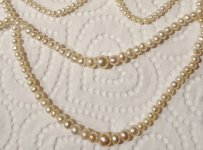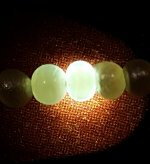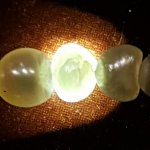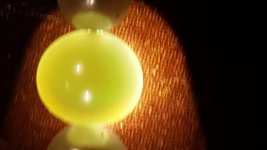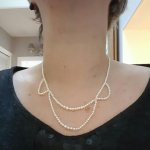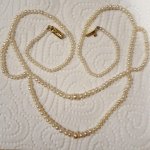... so that bodes well for natural, (yes, Dave?)
Natural vs CFWP
Luster ----------- 0.5 - 0.5 Consistent with either
Shape ----------- 0.0 - 1.0 More common in CFWP, numerous flat spots.
Inclusions ------ 0.0 - 1.0 Does not present with inclusions.
Matching ------- 0.5 - 0.5 Equal matches are possible, but more consistent with CFWP.
Structure ------- 0.5 - 0.5 Known to be terraced aragonite, consistent with either
Size -------------- 0.5 - 0.5 Consistent with either
Color ------------ 0.5 - 0.5 Consistent with either
Translucency --- 0.5 - 0.5 Consistent with either
Onset ----------- 0.0 - 0.0 Unknown at this time. No point scored (Even though imagery supports periostracial origin)
Nuclear --------- 0.0 - 1.0 More uniform than not. No shell beads present.
Natural - 3
CFWP - 6
A better look at the nuclei could raise this score to 5 or 5.5 which is only half way there. At the very least, a score of 5 or more merits a trip to the lab.
Of the current images, only one has enough resolution (from only a single axis) and appears consistent with a tissue graft.
In the meantime, anyone who owns a FW strand can see for themselves. Hold them to a lamp and look at every pearl. Even thought they'll never be perfectly identical. you'll see similarities. Likewise Caitlin, you have some naturals... try the same with those. I'm certain you'll see differences.


